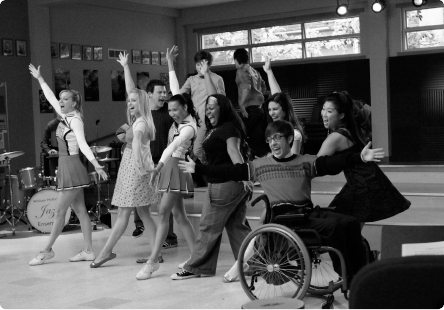Romantic Attraction

On Glee, Artie and Tina’s instant attraction is disrupted when it is revealed that Tina isn’t as similar to Artie as it first seemed. Have you ever misled a romantic interest into thinking you shared a common concern or value? If so, did you eventually confess? What was the outcome?
Carin Baer © FOX/Courtesy Everett Collection
On the hit TV show Glee, Artie excitedly wheels his chair to the sign-up sheet for the new school song-and-dance club.3 When he struggles to reach the list, Tina intervenes and helps him. An instant attraction is sparked. As they spend time together, they quickly learn that they share much more in common than music. Both are intensely intellectual and somewhat “offbeat” in their views. Both struggle with disabilities—Artie is paralyzed from the waist down, and Tina wrestles with a speech impediment. The degree to which they rise above their respective limitations spawns a strong foundation of shared respect. Their mutual attraction deepens and eventually culminates in a kiss—Artie’s first. But when Tina reveals that she was faking her disability, Artie is shattered, and he angrily breaks off their relationship.
Every day, you meet and interact with new people while in class, standing in line at the local coffee shop, or participating in clubs like the one depicted on Glee. Yet few of these individuals make a lasting impression on you, and even fewer strike a chord of romantic attraction. What draws you to those special few? Many of the same factors that drew Artie and Tina together: proximity, physical attractiveness, similarity, reciprocal liking, and resources (Aron et al., 2008). These factors influence attraction for both men and women, in both same- and opposite-sex romances (Felmlee, Orzechowicz, & Fortes, 2010; Hyde, 2005).
3All information that follows is from www.fox.com/glee.